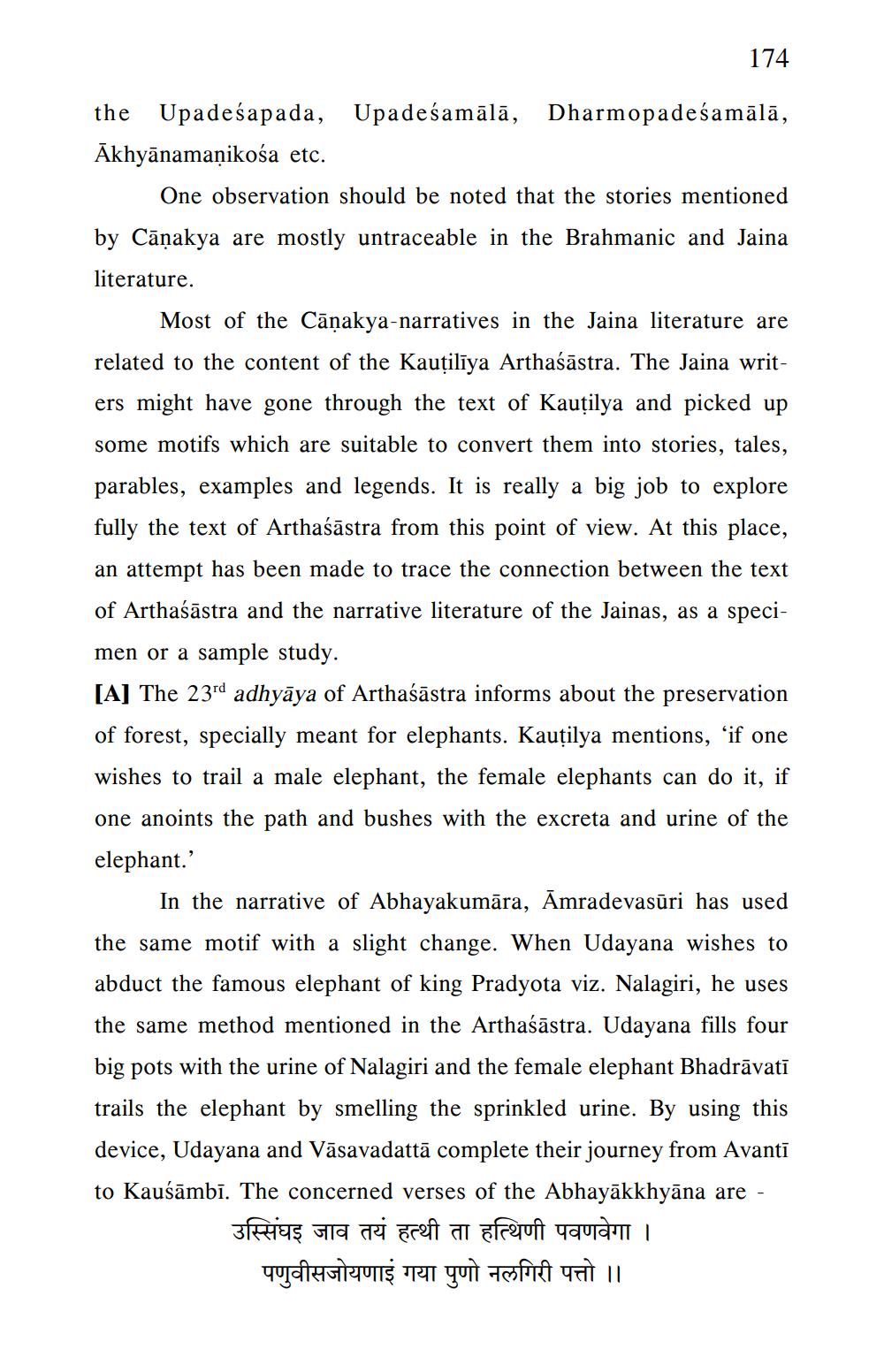________________
the
Upadesapada, Upadeśamālā,
174
Dharmopadeśamālā,
Akhyānamaṇikosa etc.
One observation should be noted that the stories mentioned by Caṇakya are mostly untraceable in the Brahmanic and Jaina literature.
Most of the Caṇakya-narratives in the Jaina literature are related to the content of the Kauțiliya Arthaśāstra. The Jaina writers might have gone through the text of Kautilya and picked up some motifs which are suitable to convert them into stories, tales, parables, examples and legends. It is really a big job to explore fully the text of Arthaśāstra from this point of view. At this place, an attempt has been made to trace the connection between the text of Arthaśāstra and the narrative literature of the Jainas, as a specimen or a sample study.
[A] The 23rd adhyāya of Arthaśāstra informs about the preservation of forest, specially meant for elephants. Kautilya mentions, 'if one wishes to trail a male elephant, the female elephants can do it, if one anoints the path and bushes with the excreta and urine of the elephant.'
In the narrative of Abhayakumāra, Āmradevasūri has used the same motif with a slight change. When Udayana wishes to abduct the famous elephant of king Pradyota viz. Nalagiri, he uses the same method mentioned in the Arthaśāstra. Udayana fills four big pots with the urine of Nalagiri and the female elephant Bhadravatī trails the elephant by smelling the sprinkled urine. By using this device, Udayana and Vāsavadatta complete their journey from Avanti to Kauśāmbi. The concerned verses of the Abhayakkhyāna are - उस्सिंघइ जाव तयं हत्थी ता हत्थिणी पवणवेगा । पणुवीसजोयणाइं गया पुणो नलगिरी पत्तो ।।




